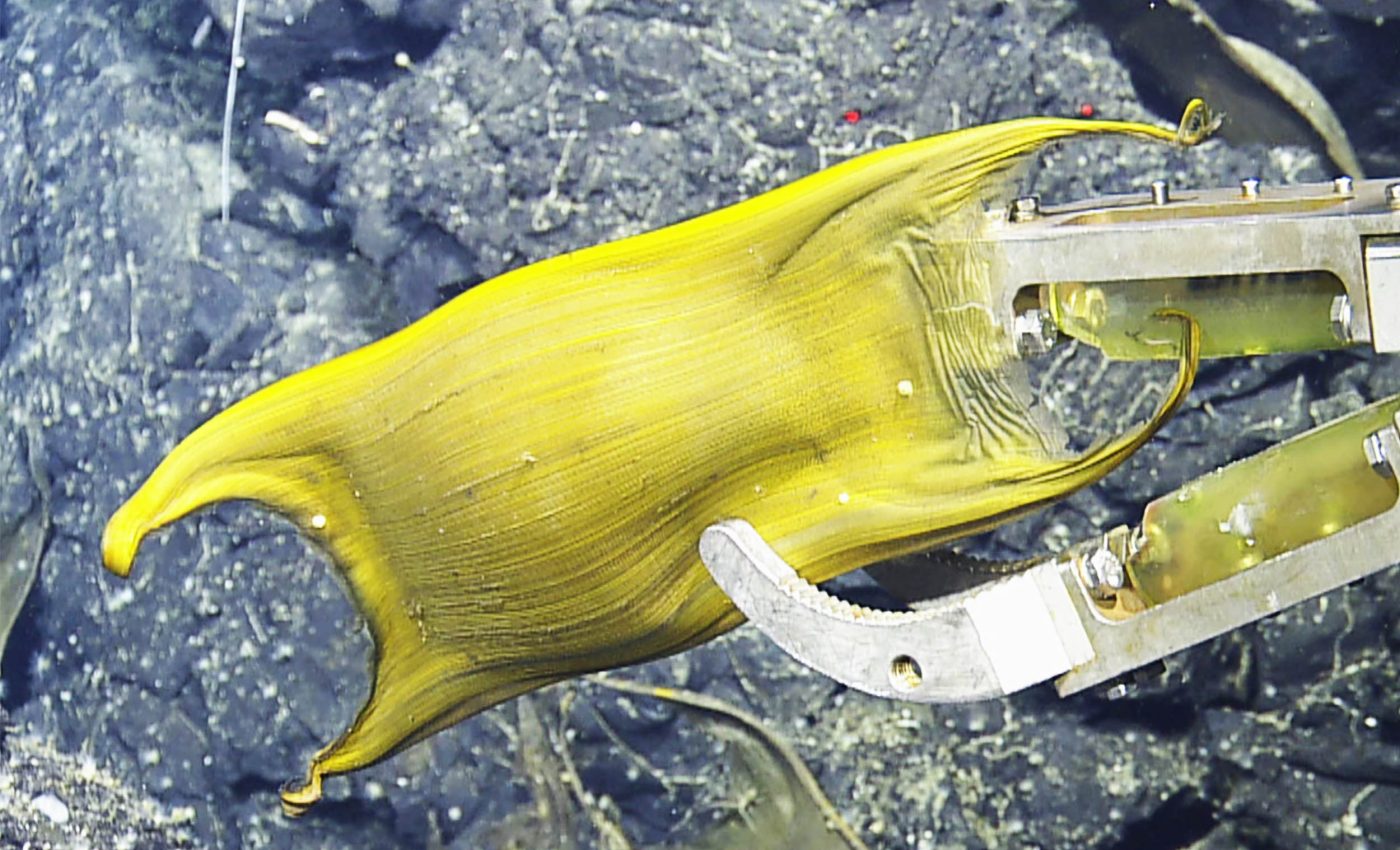
Underwater volcano becomes a natural incubator for thousands of live eggs
A seamount off Vancouver Island has revealed something startling. Thousands of massive, bright skate eggs have appeared inside a volcanic depression, stirring both awe and a bit of unease.
Marine biologist Cherisse Du Preez, a specialist at Fisheries and Oceans Canada, spearheaded the 2019 expedition that first documented these huge egg cases.
Known in some circles as “mermaid’s purses,” they belong to the Pacific white skate (Bathyraja spinosissima).
Uncovering an unusual location
This underwater mountain rises about 3,600 feet above the seafloor, crowned with mineral-rich water and thermal activity. Heat surges through cracks, creating a gentle oven-like effect.
That warmth means the egg cases, which measure around 18 to 20 inches across, may develop faster than expected. A typical skate embryo can take as long as four years to hatch, so extra heat might shorten that lengthy timeline.
Rare glimpse into deep-sea parenting
The egg-laying behavior of deep-sea skates has rarely been witnessed in the wild.
Most of what scientists know comes from isolated egg cases found on the seafloor, with little context about how or where they were laid.

Catching this moment in real time – right at the volcano – offers fresh insight into how these animals choose nesting sites. It also helps explain why they may risk laying eggs so close to active geothermal zones.
Why are skate eggs so large
Several deep-water fish show a pattern called marine gigantism, often linked to colder depths and extreme conditions. A fully grown Pacific white skate can reach nearly 6.5 feet from tip to tail.
Such size provides a better chance of survival in sparsely populated surroundings. Enormous egg cases also offer rich nutrients for the developing embryo, ensuring a head start.
Changing research priorities
Before this site was found, the Pacific white skate was rarely observed in its natural habitat. The eggs were even more elusive, which made it difficult to track their full reproductive cycle or early development.
Now, researchers are prioritizing long-term monitoring of this volcanic site.
Time-lapse cameras, submersible surveys, and genetic sampling are being deployed to understand why the skates favor this specific location and how frequently they return.
Connections to volcanic heat
Active underwater vents may play a bigger part in the lives of skates than previously assumed. The newly observed egg cases reinforce the idea that volcanoes can serve as natural incubators.
A comparable scene was documented near the Galápagos Islands in 2018, where scientists found skate egg cases thriving next to hydrothermal fluids. Observers suspect that these mild, mineral-rich flows boost embryonic growth.
What this means for other species
The Pacific white skate may not be the only species benefiting from volcanic warmth.
Scientists suspect that similar geothermal nursery zones could exist around other underwater volcanoes and hydrothermal vents, supporting fish, invertebrates, and possibly even octopuses.

Some egg casings found at this site don’t match the skate’s known size or texture, suggesting multiple species might be sharing this thermal refuge. Researchers are collecting these cases for genetic analysis to confirm their origins.
Implications for ocean exploration
Deep-sea research often uncovers surprises that reshape perceptions of life on our planet.
The presence of these giant eggs in an active seamount suggests that geological features like volcanic vents influence life cycles in unexpected ways.
One 2023 expedition recorded an adult Pacific white skate depositing a new egg case on the same slope. This finding further hints that multiple skates return to this warm spot, hinting at a recurring reproductive pattern.
Conservation and the next steps
Protecting vulnerable seamount nurseries poses challenges. Many are located far from shore and sit in international waters, limiting the enforcement of fishing or drilling regulations.
Researchers and conservation groups emphasize the importance of safeguarding these delicate ecosystems.
Keeping them healthy preserves critical habitats for species that carry out crucial life stages amid volcanic heat.
Risks to underwater nurseries
Deep-sea mining and trawling are growing threats to seamount ecosystems. These activities can destroy nursery grounds before scientists even know they exist.
The volcanic slope off Vancouver Island isn’t currently protected under any formal marine policy. Researchers are calling for urgent international cooperation to designate areas like this as ecological preservation zones.
—–
Like what you read? Subscribe to our newsletter for engaging articles, exclusive content, and the latest updates.
Check us out on EarthSnap, a free app brought to you by Eric Ralls and Earth.com.
—–













